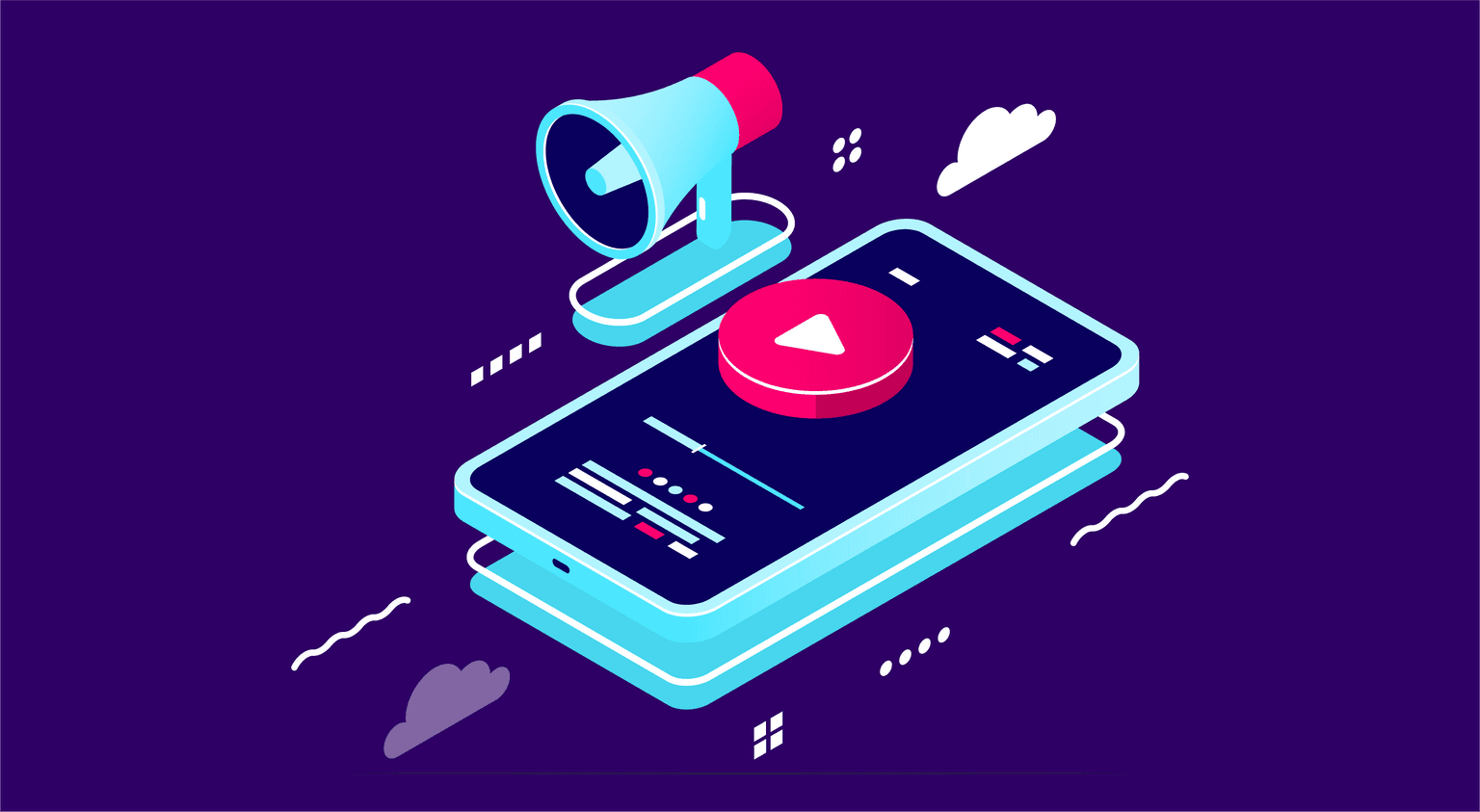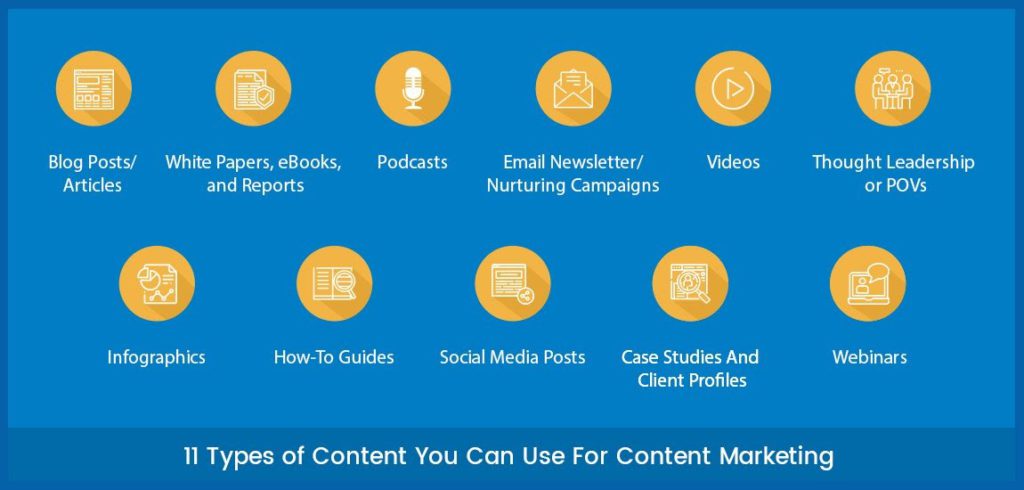A Comprehensive Guide On Content Distribution Strategies

Table Of Contents
- Building An Effective Content Distribution Strategy
- Top Tips For Your Content Distribution Strategy
- Key Takeaways
- Conclusion
- FAQs
Content creation has become a serious part of both brands’ and publishers’ digital marketing strategies in the last few years. Content writers spend hours creating blog posts. However, the amount of time spent on distributing content is negligible. The truth is, even the most groundbreaking and creative content might never be discovered without a proper content distribution strategy.
With an effective content distribution strategy, you can display your content to your target audience. Moreover, it helps in forming a relationship with them. Thus, eventually, they will take the action you had been hoping for, such as signing for a newsletter, watching your video, or downloading the whitepaper.
When you are formulating the distribution strategy, you can include unpaid and paid distribution channels. But, the strategy has to be in complete rhythm. So, choose your distribution channels carefully. Keep in mind that they have to cater to your business goals.
Before we move on to the tips to distribute content, let’s find out what it means.
Content distribution is the process of sharing, publishing, and promoting content. It is about providing content to your audience through different media formats and channels. Presently, social media plays a significant role in content distribution.
Building An Effective Content Distribution Strategy
When investing in content marketing, you need a proper distribution plan.
A good content distribution strategy is crucial for the following reasons:
- It can improve the content’s impact after its creation. Creating content is of no use if no one is reading it. With a distribution strategy, your carefully curated content is right in front of your target audience.
- You might have too many writers for the content based on the company size. If you have a content distribution strategy, it will easily align the various parties and help you collaborate efficiently.
- The distribution strategy sets benchmarks against which you can assess the performance of your content distribution strategy. Content distribution can be as vague as just pressing the “Publish” button. However, if you have a content distribution strategy, it helps set benchmarks.
Top Tips For Your Content Distribution Strategy
Research your target audience
Your main aim to create content is to get it in front of your audience. But, if you don’t know who they are and what they like reading, it will be challenging to reach out to them. So, before you start with your content distribution strategy, research your audience.
Start collecting demographic data. You can get this from email subscribers, website visitors, customers, and social media followers. Check your audience’s income, gender, age, education, location, and other such categories. Use social media analytic tools like Google Analytics to gather such details.
You can gather feedback from your customers, social media followers, and email subscribers directly. Learn about their requirements and pain points and how they feel about your current content and distribution methods. Use these two to create a buyer persona. The buyer persona serves as the model for your content’ consumers and customers. As you build your content distribution strategy, it represents their pain points, motivations, and information preference.
Evaluate your distribution options
Often, brands make the mistake of assuming that they have to post their content everywhere. They believe it will improve their chances of achieving the desired result. However, with this content distribution strategy, you might not be able to reach out to the right target customers.
The more platforms you add to your strategy, the more complex it will become for your team to create, track and assess content. As a result, try to gauge the value of every digital platform before posting your content.
Here are the media platform options you have at hand.
- Shared media
Social media has generated a lot of opportunities for marketers to create original content – in response to the relevant customer conversations taking place in the community. Your activities on the platform are controlled by the decisions made by a third party that can alter the procedures and policies. It also ceases the operation altogether.
- Owned media
The content and distribution of these channels are handled by your own brand. These are emails, websites, newsletters, and social media platforms. It might not be easy to condition the audience to check out the posts regularly.
- Paid media
These are the channels that you pay for. It enables your business to share any messages it wants and completely control where you are sharing the content.

Audit your content
You might have already published some content such as social media, blog posts, or videos. But before you go ahead, you have to conduct an audit. A content audit helps understand if you are hurting or helping with your content distribution efforts. Auditing the content will remind you of the topics you have already created. It will give you an idea about the topics you have to extend. A thorough content audit has three main parts.
- Logging the content: You can log your content manually or use a tool.
- Assessing the content: When you crawl the content, you will find a list of social shares, backlinks, and content length. With these details, you can assess the impact of each content piece alerting you to something that has to be erased, updated, or rewritten.
- Identify the content gaps: You can identify the gaps in the content with a tool or by carrying out keyword research to find out the new keyword phrases or keywords. Hence, it will help in your website rank.
Decide on the content types
After performing the audit, it is time to find out the type of content you want for a brand. A few organizations publish all their content on their blog and then republish or repurpose it. Blog posts are consumed universally, easy to localize and repurpose. Also, they are simple enough for sharing. Almost 50% of the buyers read a brand’s blog, while others are a part of the purchasing decision.
So, you should create a business blog and then extend the content types to share on different channels.

Set the content distribution goals and KPIs
If you have the right goal, it will help you recognize where you are headed and what success will look like when you achieve your goal. The content distribution strategy you formulate must have goals for your content’s key performance indicators (KPIs) and their metrics.
Here are the KPIs and associated metrics,
- Traffic/reach: Unique page views by source and channel
- Engagement: Average time on page and bounce rate
- Top Content: Top exits and top page views
- Impact: Conversions, click-through rates, and backlinks
- Sentiment: Social shares and comments
The metrics might vary as per the distribution channel. Thus, you have to select the metrics corresponding best to every channel. When it comes to establishing a baseline, it might take a few months, specifically when you are using it for the first time.
Create an editorial calendar
Content distribution and marketing require a lot of planning. This is when you can take the help of an editorial content calendar. Create a calendar in Google Sheets or Excel or even in Google Calendar. With the editorial calendar, your digital marketing team can stay aligned. Thus, they will effectively work towards a single goal. It gives the editors and writers a roadmap for what they will work on in the following weeks or months. The editorial calendar should be where you enter your content distribution and creation plans.
Create the content
When you have an idea about the type of content you need and have already decided on the distribution channels, you need to pay attention to the actual content. Content creation varies with the team size, resources, brand, and industry. Hence, you have to get the most appropriate and pointed advice.
Distribute and market the content
So, you have already created the content for your brand. Now, you have to publish it for the world to see. Check out the editorial calendar and the selected distribution channels to publish and market your created content. No matter the marketing channels you choose, make sure you follow the rules to optimize the post for every channel. For instance, if you post your content on social media, follow the guidelines for the ideal time to post content and share it. The same holds true for email marketing.

Measure the result
When everything has been done, it is time to measure the outcome of the content distribution strategy. For this, you have to check the KPIs you have set at the beginning of the content distribution plan and find out what has changed. It will tell you if you have been successful in reaching your goal.
You can do the following for this:
- Measuring sharing activity through social analytics tools
- Check Google Analytics to find out how the content is performing
- As you monitor your progress, you can upgrade the content marketing strategy from start to end.

Conclusion
By the end of this article, you should be able to put a content distribution strategy in place, understand the content distribution platforms, and know the dos and dont’s of content distribution.
Key Takeaways
- Content distribution strategy is more important than content creation.
- Know your audience and the proper channels to distribute your content.
- Before you post your content, learn where you stand.
- Know the type of content you need before creating the content.
- After posting the content, use analytics to measure its performance.
FAQs
You can get more organic search traffic, expanded brand awareness, and clearly defined brand personality with the right content distribution strategy.
Digital distribution is the distribution or delivery of digital media content, such as video, audio, video games, e-books, and other software.
Content distribution can support your business or market goals. However, to make it work, you have to ensure that you are following the right strategy. Make sure your digital marketing team has a clear idea about your distribution and marketing goals.
You need to write about what your prospective customers would like to know. Don’t make the mistake of writing content about what you would like to tell your customers. Make sure that you only write about the things that you know. Don’t delve into areas that you don’t know anything about.
Quality content means content that will satisfy the requirements of the content viewer. So, you need to be empathetic, thoughtful, and analytic. When you develop quality content, it should answer the readers’ questions completely, contain fluff details, align with the viewer’s perspective, and anticipate what the following would look like.
A majority of the distribution channels are divided into three main types – earned, paid, and owned. You might have to use all of them to create an effective content distribution strategy.
Latest Blogs
Explore how Google’s 2025 AI search updates triggered ranking chaos. Learn actionable strategies to adapt your SEO for AI Overviews, zero-click searches, and SERP volatility. Stay ahead now.
Learn how to rank on AI search engines like ChatGPT, Perplexity, and Gemini by optimizing your content for authority, structure, and relevance. Stay ahead in AI-driven search with this strategic guide.
Explore the best healthcare SEO services for your medical practice. Improve online visibility and effectively reach more patients in need of your services.
Get your hands on the latest news!
Similar Posts

B2C Marketing
5 mins read
Top Choices for Best Content Marketing Services in B2B Industries

Artificial Intelligence
5 mins read
How A Lead Generation Specialist Can Use AI-Powered Content Funnels to Drive Conversions

Artificial Intelligence
4 mins read